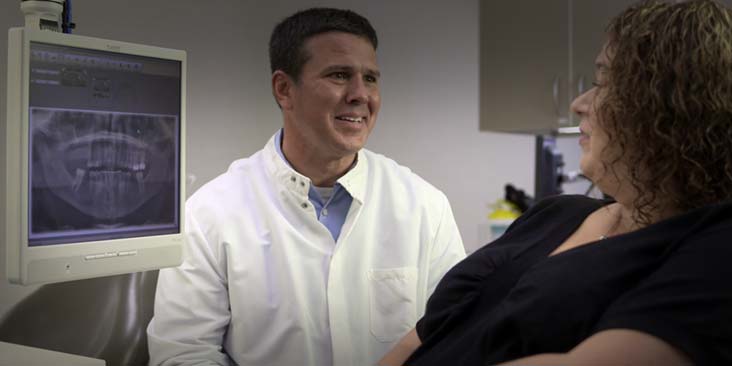
Malocclusion
What is Malocclusion?
Malocclusion refers to abnormal positioning of the teeth when the jaws are closed, including overbites, underbites, crossbites, and crowded teeth.
Most people seek treatment for malocclusion for cosmetic reasons instead of medical reasons. However, it’s often beneficial to overall health to correct the issues caused by malocclusion. While most children have some degree of malocclusion, a small percentage have severe or comprehensive malocclusion which may require a combination of orthodontics and orthognathic surgery, which is orthodontics with the treatment of the jaws to provide a stable, healthy and attractive bite.
Straightening teeth and realigning a crooked bite has long-term benefits for overall oral health:
- Straight teeth are easier to brush and floss. This helps reduce tooth decay, gum disease, and gingivitis
- A correct bite allows your teeth and mouth to chew on food the way they are supposed to. Fixing problems associated with an overbite, underbite, crossbite or another other types of misaligned bite makes it easier to chew food
- Prevent premature wear. If your teeth don’t align properly, it puts extra pressure on adjacent teeth, causing them to wear faster
- Correct teeth alignment also helps you speak properly. When upper and lower front teeth don't align properly, speech problems can occur
- Aligning upper and lower teeth may help reduce discomfort caused by TMJ
Common Malocclusion Issues Corrected by Braces
Crowded teeth: This occurs when there are too many teeth for the allotted space in your mouth.
Misplaced midlines: This occurs when the center of your upper front teeth don’t line up with the center of your lower front teeth.
Gapped teeth: Gaps between your teeth because teeth don’t fill up all the available space in your mouth or from missing teeth.
Crossbites: When upper teeth do not align with the lower teeth as they should while biting down.
Overjets: This occurs when the upper front teeth stick out excessively in front of the lower teeth. This is also called “buck teeth.”
Open bites: This occurs when you bite down and the back teeth bite together, but the surface of the front or side teeth, or both, have a gap between them.
Overbites: When the upper teeth excessively cover your lower teeth when you are biting your teeth together. This is sometimes called a “deep bite.”
Underbites: This occurs when the lower teeth are too far forward or the upper teeth are too far back. This gives a bulldog-like appearance.
Our Services
Dental Associates offers complete family dentistry plus specialty services like orthodontics, oral surgery, and dental implants. Click to learn more.
Dental Associates Locations
We have over a dozen convenient locations in Wisconsin. From Kenosha and Racine, up through Milwaukee, Fond du Lac, and Appleton to Green Bay.

